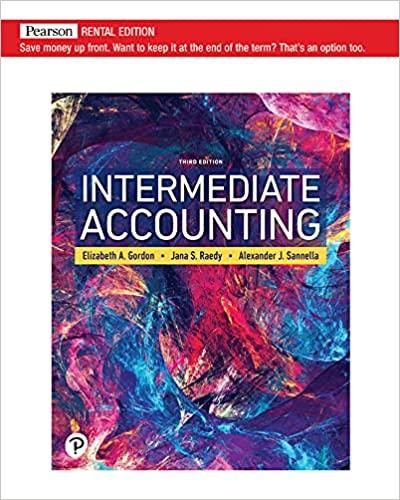Answered step by step
Verified Expert Solution
Question
1 Approved Answer
Please show how to work them out and not just the solutions. Thank you! 11-29 Constrained Optimization Analysis: Product-Mix Decision Sandalwood Company produces various lines

Please show how to work them out and not just the solutions. Thank you!
11-29 Constrained Optimization Analysis: Product-Mix Decision Sandalwood Company produces various lines of high-end carpeting in its Asheville, North Carolina, plant. This question pertains to two different grades of carpet in its Symphony line: commercial and residential. The former sells for $16 per square yard, while the latter sells for $25 per square yard (wholesale). Variable costs are $10 per square yard and $15 per square yard for the commercial and residential grade products, respectively. On average, it takes 12 labor hours to produce 100 square yards of commercial carpeting, and 18 labor hours for each 100 square yards of residential carpeting. Currently, the company is producing 28,000 square yards per week of commercial carpet and 6,000 square yards per week of residential carpet. Total labor-hour consumption at the plant is currently 4,440 hours per week. Fixed manufacturing costs ($17,300 per week), are allocated to products on the basis of labor hours. At the current volume and mix, this amounts to $4.667 and $1.50 for each square yard of commercial versus wung und we residential carpet produced, respectively. The company is currently evaluating its sales mix and the possibility of expanding its labor force Required 1. At the current output level and mix, what is the gross profit (gross margin) for each of the two products, in total and per square yard? Round total amounts to nearest whole number, round per-yard amounts to 2 decimal places 2. What is the contribution margin for each of the two products, in total and per square yard? Round total amounts to nearest whole number, round per-yard amounts for contribution margin to 2 decimal places. 3. Assume that the company has recently conducted a marketing study, which revealed total estimated weekly demand of 30,000 and 8,000 square yards of commercial and residential carpeting, respectively. Assume, too, that the company is able to expand its labor force to 4,600 hours per week. (a) What is the contribution margin per labor hour (to 2 decimal places) for each product? (b) Given your answer to (a) above, and the labor hour and product demand constraints, what is the optimum product mix, on a weekly basis? That is, how many square yards of each product should be produced each week? (Round answers to nearest whole number.) (c) Generate a graphical solution to this problem, similar to the solution presented in Exhibit 11.21. 4. What conceptual lesson (take-away) is associated with requirements 1-3 above? 5. What is the primary role of the management accountant in terms of addressing the short-term product- (or service-) mix problem? 11-29 Constrained Optimization Analysis: Product-Mix Decision Sandalwood Company produces various lines of high-end carpeting in its Asheville, North Carolina, plant. This question pertains to two different grades of carpet in its Symphony line: commercial and residential. The former sells for $16 per square yard, while the latter sells for $25 per square yard (wholesale). Variable costs are $10 per square yard and $15 per square yard for the commercial and residential grade products, respectively. On average, it takes 12 labor hours to produce 100 square yards of commercial carpeting, and 18 labor hours for each 100 square yards of residential carpeting. Currently, the company is producing 28,000 square yards per week of commercial carpet and 6,000 square yards per week of residential carpet. Total labor-hour consumption at the plant is currently 4,440 hours per week. Fixed manufacturing costs ($17,300 per week), are allocated to products on the basis of labor hours. At the current volume and mix, this amounts to $4.667 and $1.50 for each square yard of commercial versus wung und we residential carpet produced, respectively. The company is currently evaluating its sales mix and the possibility of expanding its labor force Required 1. At the current output level and mix, what is the gross profit (gross margin) for each of the two products, in total and per square yard? Round total amounts to nearest whole number, round per-yard amounts to 2 decimal places 2. What is the contribution margin for each of the two products, in total and per square yard? Round total amounts to nearest whole number, round per-yard amounts for contribution margin to 2 decimal places. 3. Assume that the company has recently conducted a marketing study, which revealed total estimated weekly demand of 30,000 and 8,000 square yards of commercial and residential carpeting, respectively. Assume, too, that the company is able to expand its labor force to 4,600 hours per week. (a) What is the contribution margin per labor hour (to 2 decimal places) for each product? (b) Given your answer to (a) above, and the labor hour and product demand constraints, what is the optimum product mix, on a weekly basis? That is, how many square yards of each product should be produced each week? (Round answers to nearest whole number.) (c) Generate a graphical solution to this problem, similar to the solution presented in Exhibit 11.21. 4. What conceptual lesson (take-away) is associated with requirements 1-3 above? 5. What is the primary role of the management accountant in terms of addressing the short-term product- (or service-) mixStep by Step Solution
There are 3 Steps involved in it
Step: 1

Get Instant Access to Expert-Tailored Solutions
See step-by-step solutions with expert insights and AI powered tools for academic success
Step: 2

Step: 3

Ace Your Homework with AI
Get the answers you need in no time with our AI-driven, step-by-step assistance
Get Started


